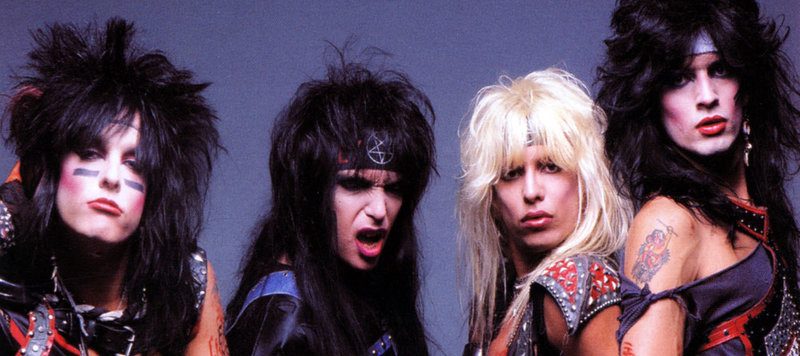Motley Crue can best be placed in the genre of heavy metal, or more specifically, glam metal. The metal sound in general is categorized by its heavy distortion, prominent beats, extended guitar solos, and overall loudness. Lyrics may sometimes be largely unintelligible, either yelled or buried beneath the instrumentation. However, typical themes are often associated with aggression and masculinity, dealing with topics of power, death, revenge, and madness (Gross, 120).
As glam metal grew in popularity throughout the 80s, Motley Crue were one of the pioneers of the new off-shoot. What distinguishes this new metal from the old metal is largely its punk influences. New metal tended to be faster, shorter, and played with more conviction than the old. While lyrical themes remained similar, new metal especially focused on masculinity, sexuality, and sex in general.
Therefore, it may come as no surprise that the largest audience of heavy metal was young, white, typically blue-collar males (Gross, 119). The vast majority of the musicians were white males themselves. However, glam metal opened a unique door to a more sexually integrated crowd.
Ten years prior, women were scarce at heavy metal shows, and the few female musicians were met with audience hostility. However, glam metal played with and distorted the typical “macho” aesthetic. Many bands dress up in what was considered women’s clothes – high heels, fishnet stockings, heavy makeup, and dyed long hair. The men often wore revealing clothing, and themes of sex and rebellion overtook themes of death and madness. More and more women took to this new style, and the few women in the genre, like Lita Ford, Rock Goddess, and Girlschool, were accepted as a matter of fact rather than met with bitterness (Frost).

The sign of the horns, or devil horns, has been a common gesture in metal almost since its inception as a genre
Though, perhaps the most consistent facet of the metal culture is its cult-like following. Metal is highly connected with salutes and symbols, all giving the fan a sense of belonging to a secret society, complete with codes and initiation rites. “A kid puts on a Judas Priest or an Iron Maiden or a Motorhead shirt and it makes a statement,” says Cliff Burnstein, who used to manage AC/DC, Def Leppard, Armoured Saint, and Metallica. So what statement is the he making? He’s telling society where he stands – outside of it (Frost). However, while this “secret society” is a large appeal for fans, it has had severe consequences, especially when said groups are connected with themes of anarchy, rebellion, and Satanism.

